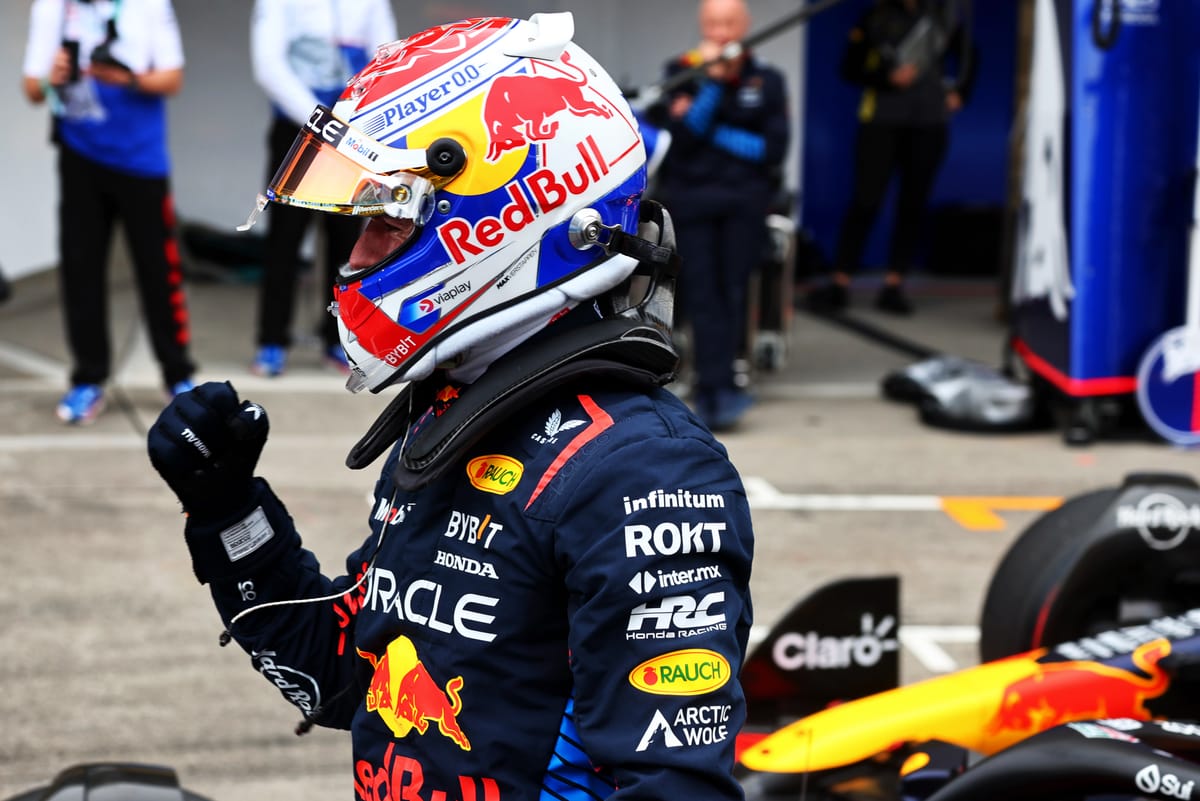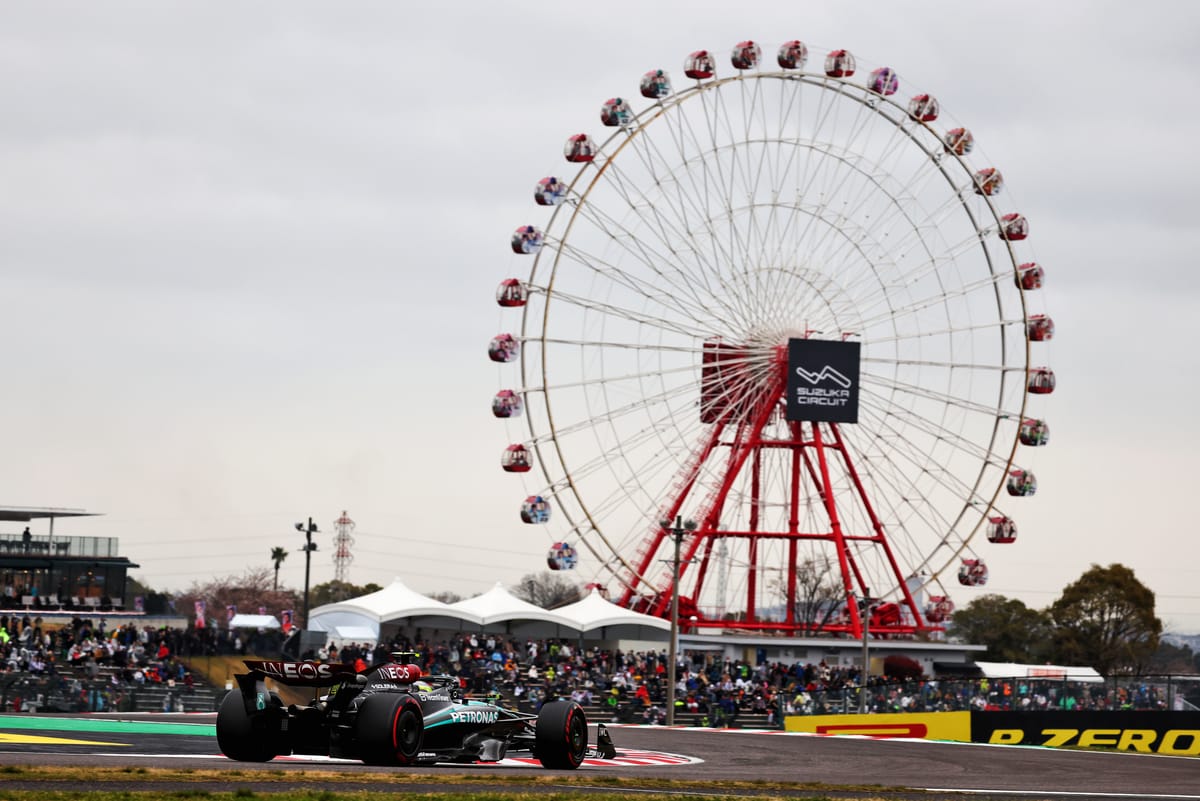Up Next

In some ways, this was Lewis Hamilton’s best Formula 1 qualifying session of the season. He comfortably out-paced team-mate George Russell for the first time in 2024 and there were moments, such as his third-fastest time in Q2, when it looked like his Mercedes was the closest thing to a Red Bull threat, within 0.147s of Max Verstappen.
But his bewilderment was obvious when told of the half-second deficit to the Red Bull in Q3. “Half-a-second! Where is there half-a-second?”
It’s obvious in hindsight that the Q2 position was flattered by running his new tyres later than the other front-runners, benefitting from the greater track grip.
But his seventh place on the grid probably understated where the car was actually at this weekend. It’s better than the grid position makes it look and could quite feasibly have been fourth in that very closely contested part of the grid.
With a bit of reflection, Hamilton was actually quite upbeat about what this represents.
“I was a bit shocked when I heard the difference,” he said later. “Because the lap felt really good. I was hopeful; I thought the lap was really, really good and you come round and it's half a second down. But it's to be expected - it's the Red Bull!”
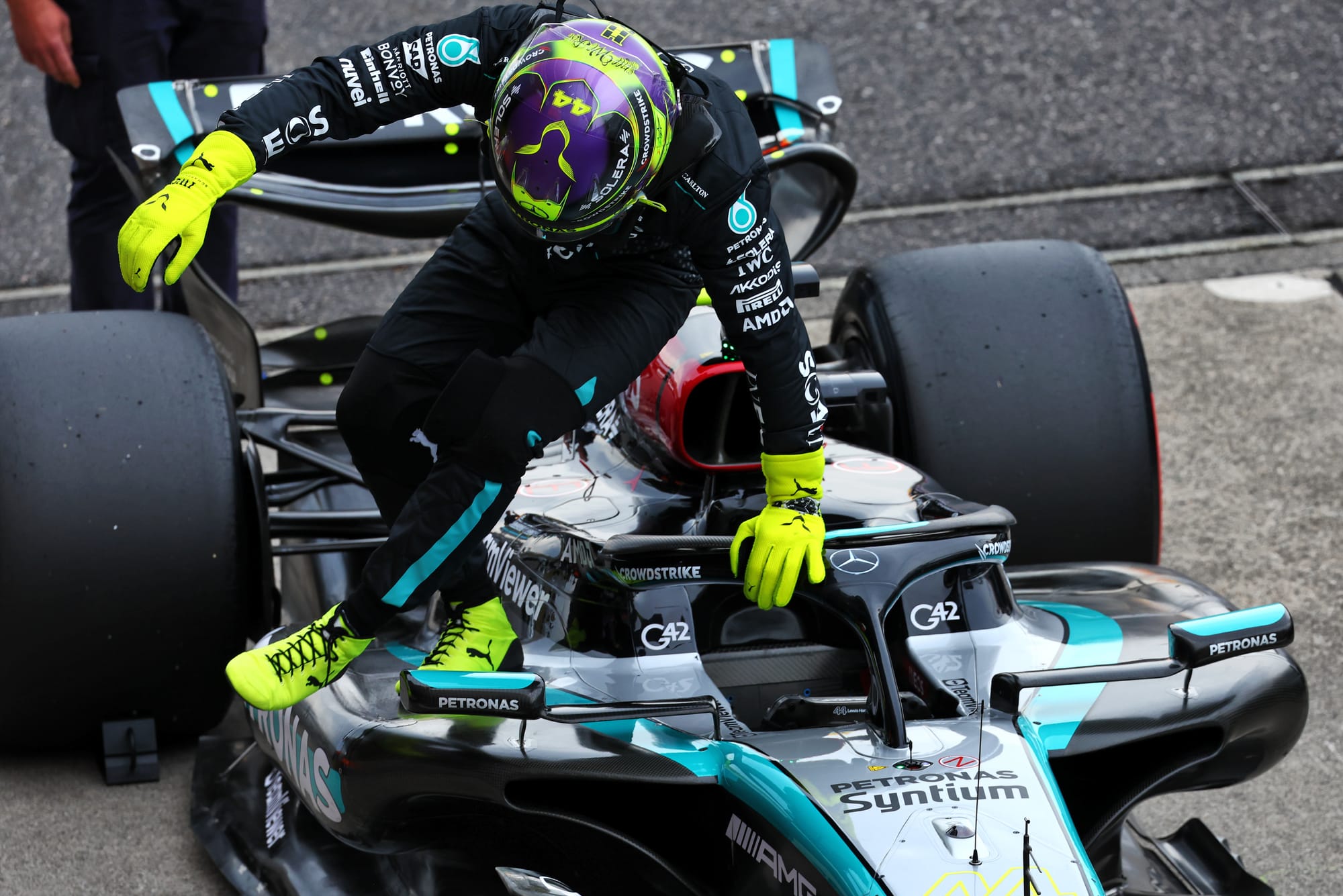
His lap, although a quarter-second faster than Russell’s, could conceivably have been vying with that of Carlos Sainz’s Ferrari for fourth on the grid. He perhaps just took a little too much from the tyres in the early part of the lap in a car which still doesn’t have the sheer aero load to keep the rubber happy over such a demanding layout.
“I already felt when I went into Turn 1 I had a bit of oversteer on the way in,” he said, “so I knew already it was not going to be spectacular. I was already a tenth down out of Turn 2. I think I know why that is. But there's not much more left; I pretty much got everything out of the car. We just need to add performance to it.”
It was more painful than just that initial 0.1s. Around Suzuka’s long, fast, abrasive turns, there would be a tyre price to pay later in the lap.
From the hairpin onwards he was bleeding lap time to the Red Bull every time he had to apply the power out of a corner - as the rear tyres were over-temperature - which we can see quite clearly in the GPS overlay. The greater the aero load, the more you can delay that. But even the Red Bull’s tyres were too hot by the end. The Merc’s just gave up a few corners earlier.
Where Hamilton lost the 0.5s
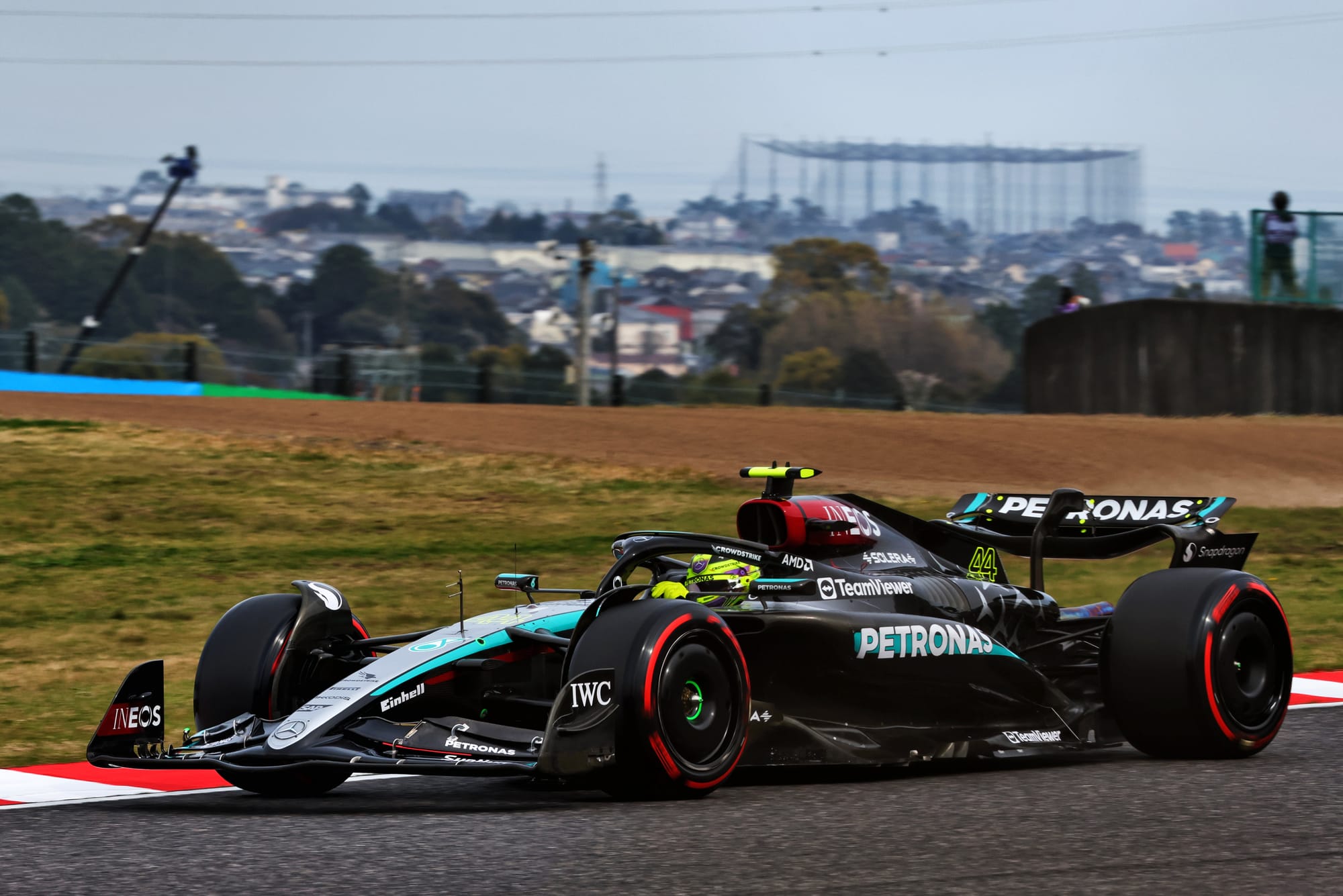
Tyre preparation is always crucial but is especially so here. Some of that is the car, some is the driver. Verstappen appears to have got his rears up to the optimum temperature to start the lap, as he absolutely flies out of the chicane to begin the lap and is already 3km/h faster than the Merc as they cross the start/finish line (something which is not repeated at the end of the lap).
That advantage carries up to the braking area and buys Verstappen 0.1s right there. There’s a further loss of 0.03s as Hamilton has his moment, the rears clearly still not quite up to temperature. But that oversteer snap will take a lot of valuable energy from the tyre, which will have to be paid for later in the lap.
Many drivers spoke of that aspect of Suzuka’s challenge. “The amount of energy we are putting into the tyres here means if you over-push you can easily lose a tenth in the corner,” explained Sergio Perez, who qualified on the front row within 0.066s of Verstappen.
Perez too rued a slight over-commitment into the first turn and felt pole could have been on. Verstappen countered that on his second Q3 lap he’d taken too much from the tyres earlier in the lap, “Which meant I had understeer [into the chicane] and couldn’t hit that kerb the way I wanted.”
Lando Norris, third fastest for McLaren and 0.292s adrift of Verstappen, concurred about the tyre challenge.
“As soon as you push that little bit more, you pay the price,” he said. “It’s in sector 1 mainly, if you go over the limit there.”
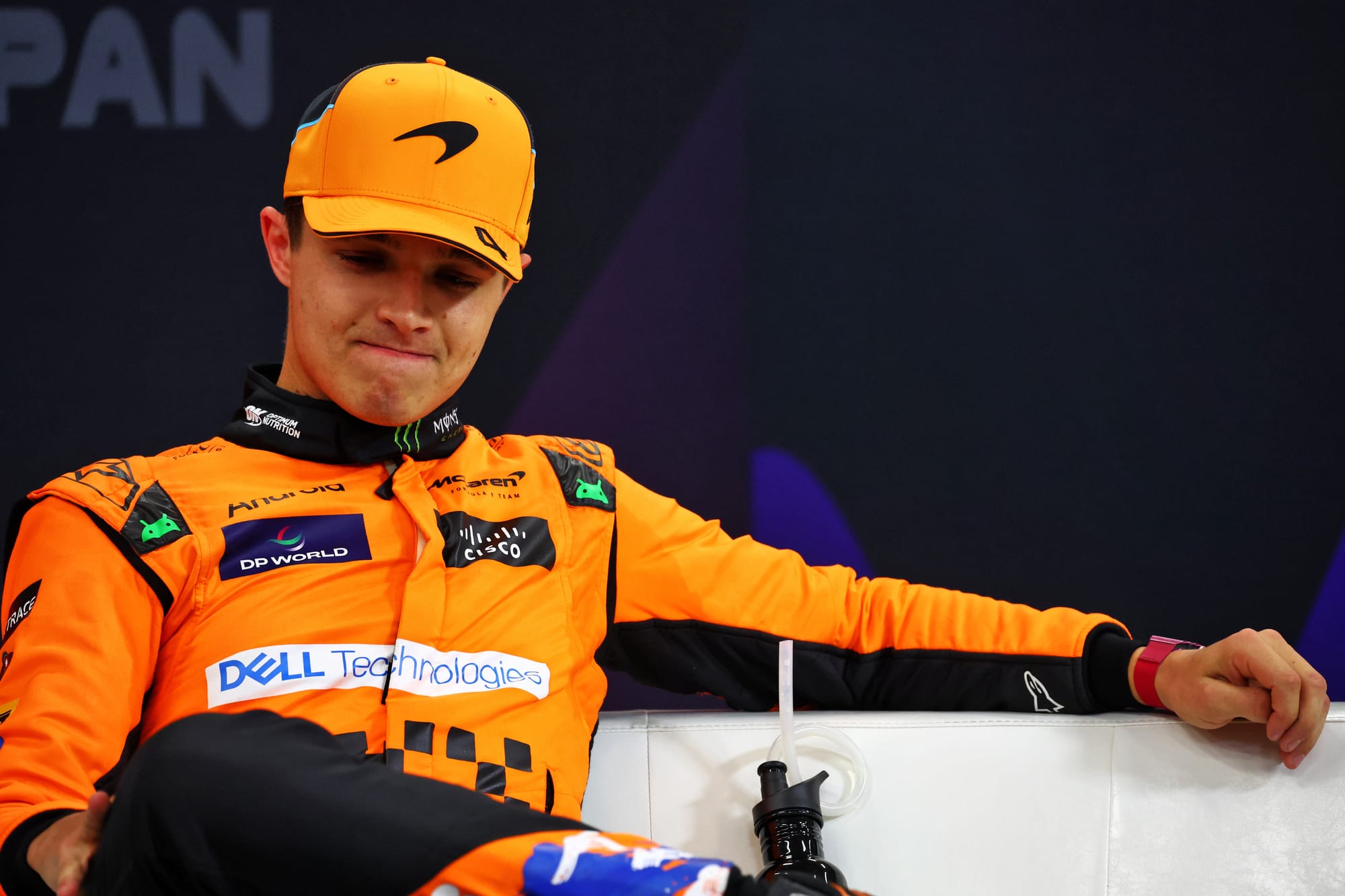
Norris felt he’d judged that challenge quite well and it was arguably the stand-out lap of the session, combining meeting the tyre challenge with the McLaren’s usual great fast-corner performance.
Hamilton is 0.133s down on Verstappen by the time he arrives at Turn 4, the beginning of The Esses. But through that whole super-challenging section he more than holds his own and comes out at the top of the hill having reduced the deficit to 0.127s. His entry speeds and precision were impressive to watch, the first time he has looked truly hooked it up this season.
Out of there, through Dunlop, cresting the rise, down the hill, braking for the Degners and then through the kink up to the Hairpin, he’s actually quicker than Verstappen and has got the gap down to 0.092s by the time he arrives at the hairpin.
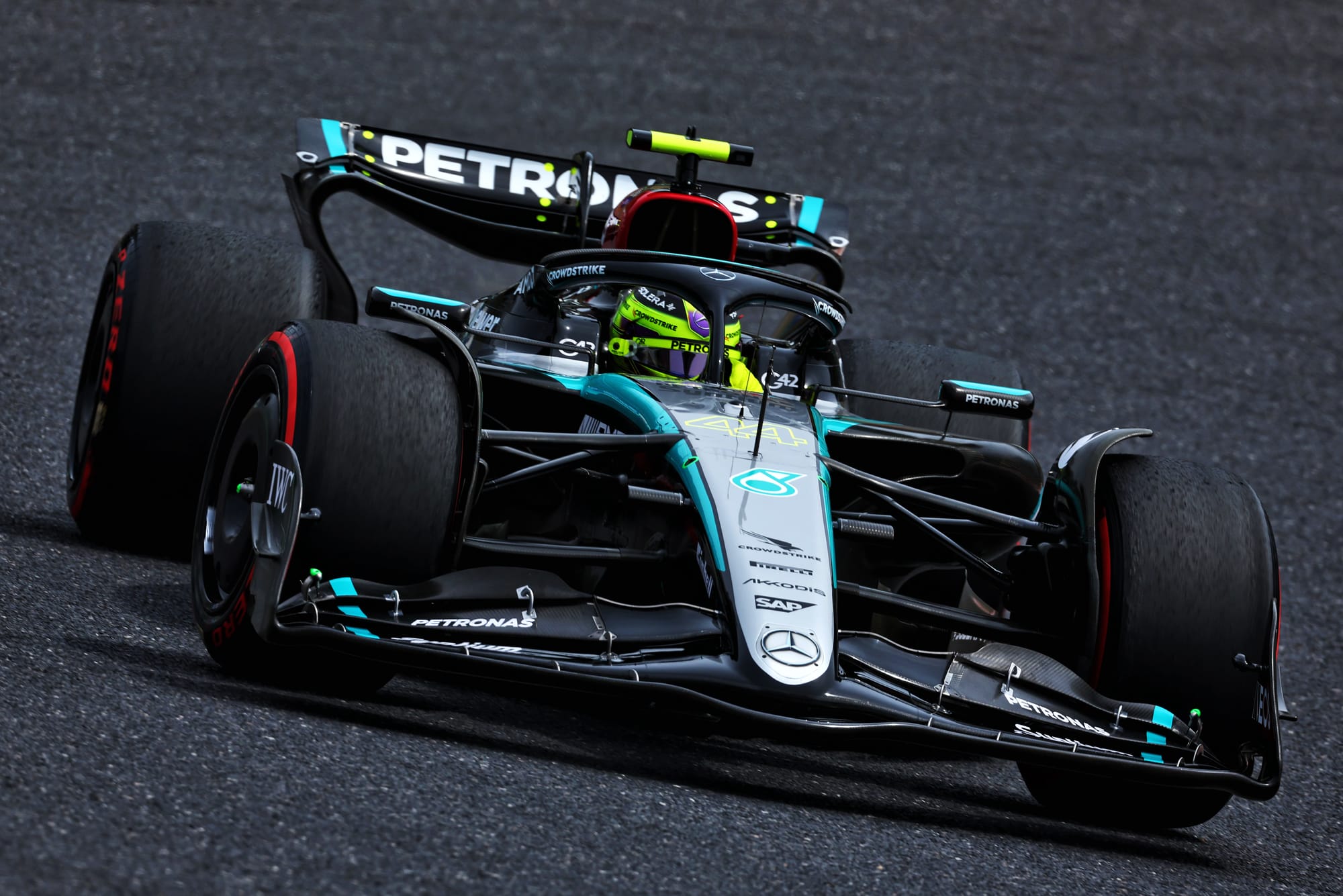
But in combination with that Turn 1 snap it’s all been too much for the rear tyres. Because from there for the rest of the lap he is bleeding lap time to the Red Bull every time he has to get on the gas to accelerate.
The gap balloons upon the harpin’s exit and does so again as he exits Spoon. By this point he’s 0.488s behind and by the end of the lap it’s 0.569s. So in answer to his question, that’s where the half-second came from.
Hamilton's body language provides telling insight
Scott Mitchell-Malm
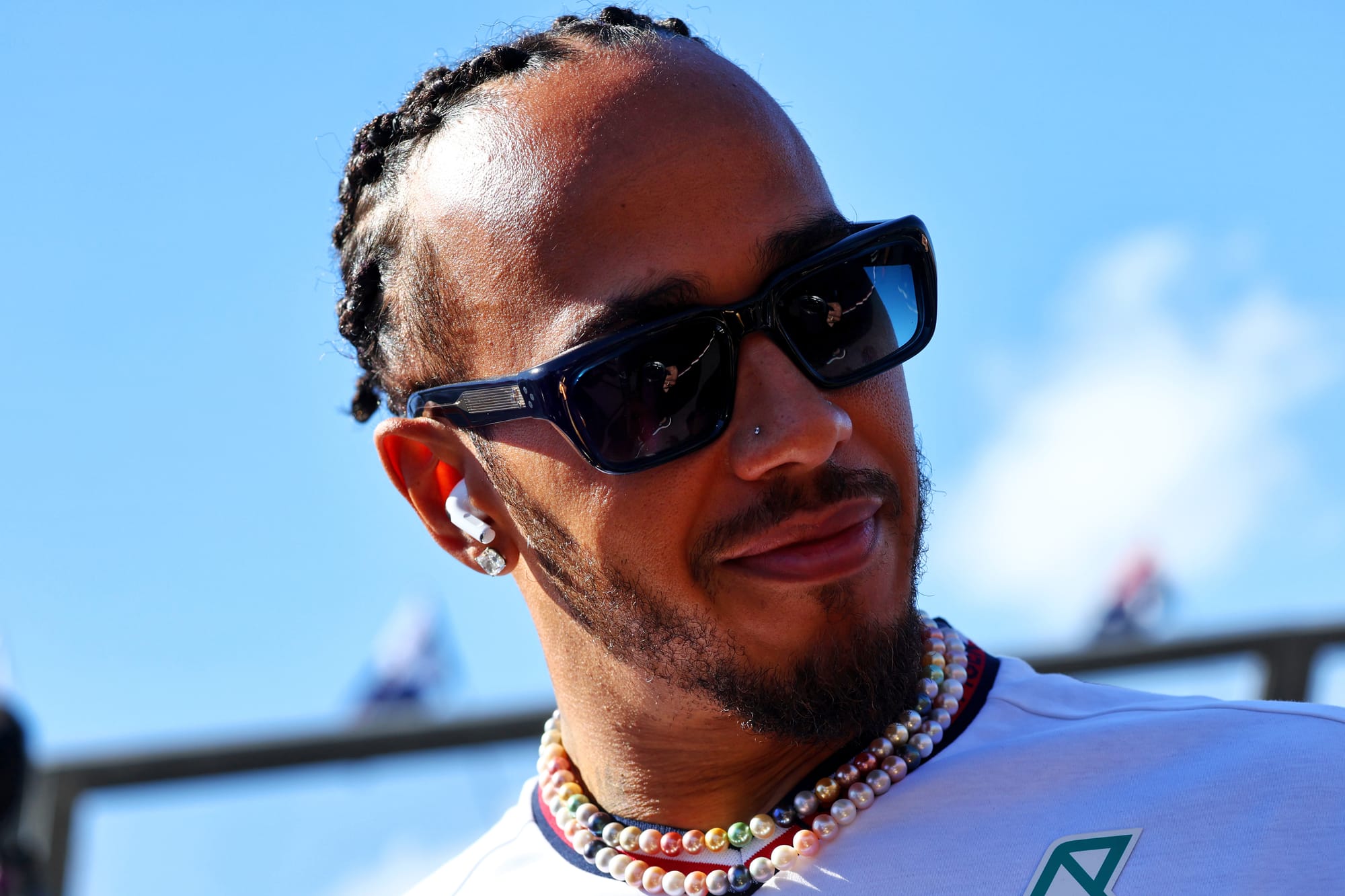
Dropping from being Red Bull’s closest challenger in Q2 to being only seventh in Q3 would normally leave a driver downbeat after qualifying.
Hamilton, though, cut a slightly surprisingly chirpy figure in the specific circumstances of how qualifying ended when we spoke to him in the media pen at Suzuka.
He was clearly encouraged by elements of this weekend, which has been a lot smoother. No experiments in terms of car set-up, no big changes from session to session, no car behaviour that has caused him any extra difficulties. He's had his head down and been focused since the first run in FP1, has been happy in the car, and enjoying driving this track.
Hamilton is particularly optimistic about the pace of the car in the high-speed sector one, which exposed the Mercedes’ weaknesses here so evidently last season. He felt in qualifying he was able to lean on it more and push it to the limit, and got the most out of the car, although there was perhaps a tiny bit on the table in Q3.
Mercedes is a long way off Red Bull still, Hamilton knows that and isn’t trying to deflect from it. But this feels more like an indication the car was doing what it was supposed to do, Hamilton was finally confident and comfortable in it, and there was a good baseline to work from all weekend. Now it just needs to have that performance added to it.
It’s easier said than done. But it’s not going to be a huge surprise to Hamilton and Mercedes given where they've started the season. And it's probably very useful for them to have an actual reference of what the car is capable of. Maybe this is the first time it’s had that this season, at least on Hamilton's side of the garage.
Conclusions
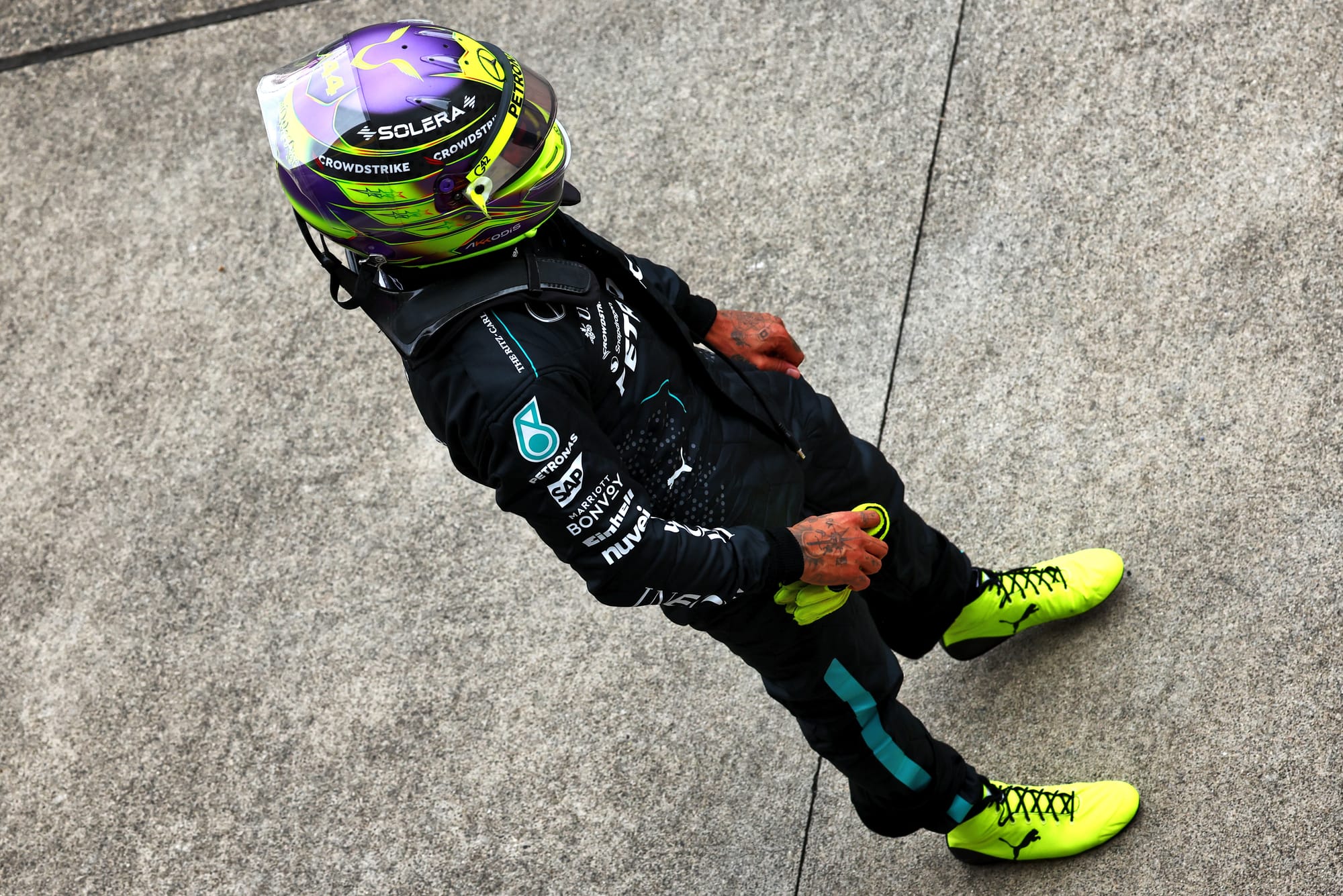
But half-a-second deficit aside, this was a positive not just for Hamilton, but for the team.
"It's been a night-and-day different weekend so far,” he said, his mood far brighter than in the car a few minutes earlier.
"Just in terms of how comfortable I felt in the car. I think we did a really good job over this past week, just the analysis everyone's done at the factory to try and understand how we can get the car in a sweeter spot.
"The car's been much nicer to drive this weekend and particularly at a track like this, where you need a nice balance, this is the nicest it's felt over the last three years. I think last year we were over a second off."
Indeed, Red Bull found no time through sector 1 compared to last year, and though it has made gains elsewhere on the track, the others – Mercedes among them – have made more.
"Sector one is the best first sector of any circuit in the world,” continued Hamilton,
"It's absolutely incredible when the car's where you want it to be and I can feel exactly where the car is weak. So I think today's given - this is the perfect test track, it exposes always the limitations of your car and where you need to improve it.
"So I know when I go and speak to my engineers now where I need to pinpoint what they're going to work on. It's going to take some time.”
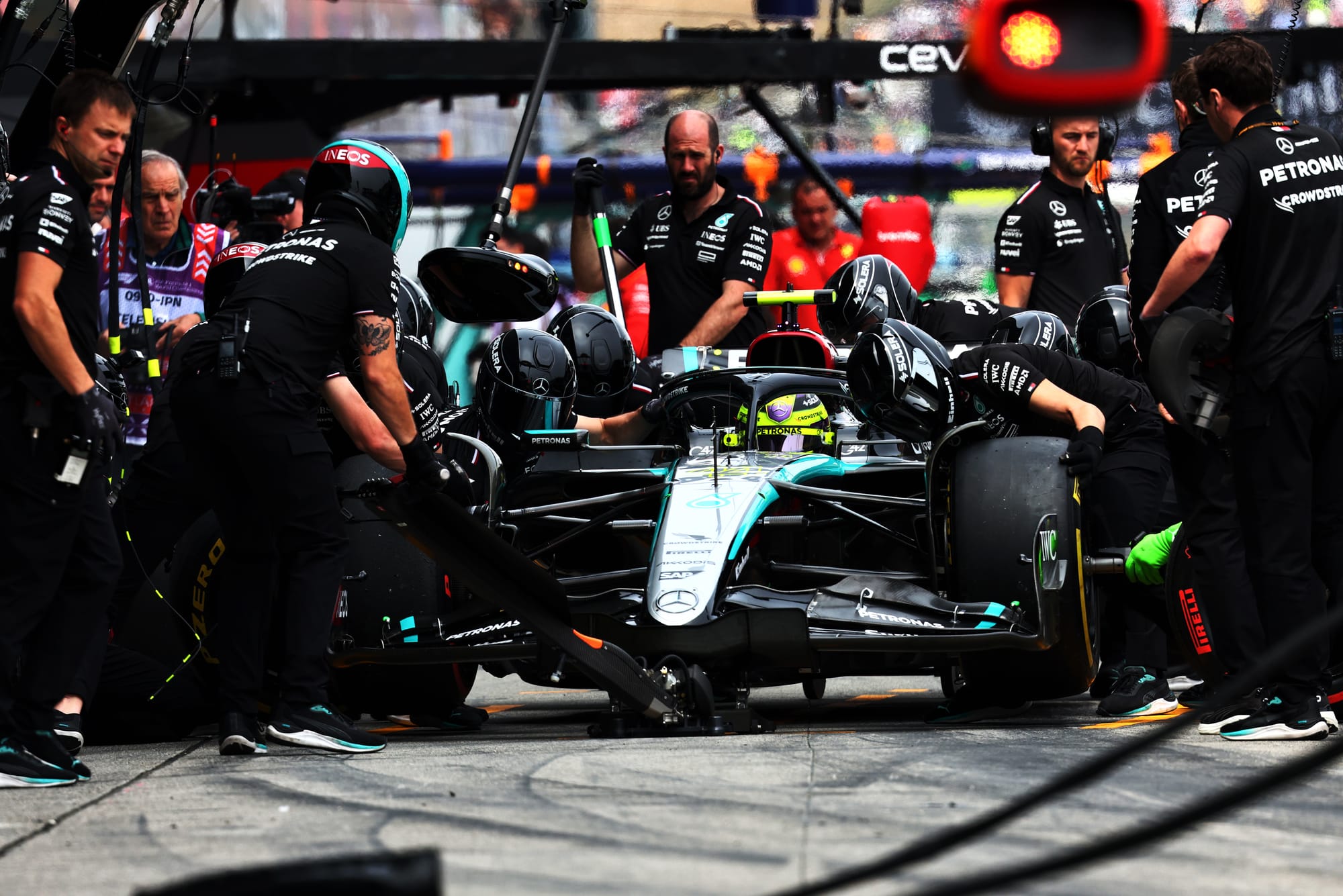
The team’s own analysis is that the car is now where it believed it was going to be in Bahrain at the start of the season – with a good basic platform upon which to start building aero load.
But from then until now has been about discovering just how sensitive the car is to set-up – and in particular how spectacularly it overloads the rear axle without a sympathetic set-up. It’s still easy to drop out of that window as George Russell proved. He’d lost grip by Turn 8 and the resultant edgy balance on corner entry gave him no confidence.
The track temperatures have been cooler here than in any of the previous three races and so it could well be that the problem is still there, waiting to pounce. But at least the team believes it has a better understanding of where that dangerous threshold lies and hopefully how to avoid it.
Furthermore, although the track surface itself was relatively cool, the energy put into the tyres here is enormous. It’s not as if it got an easy ride.
Sunday’s race will doubtless give us a few more pieces in the jigsaw.



